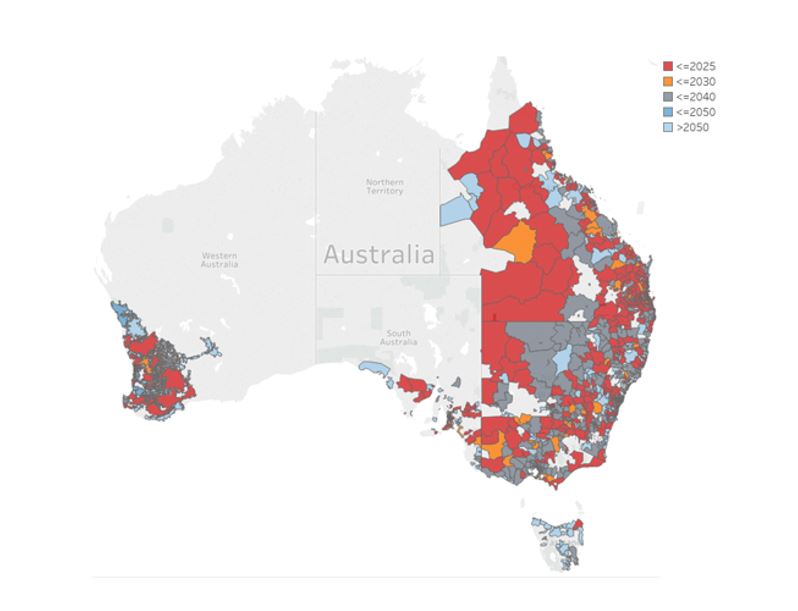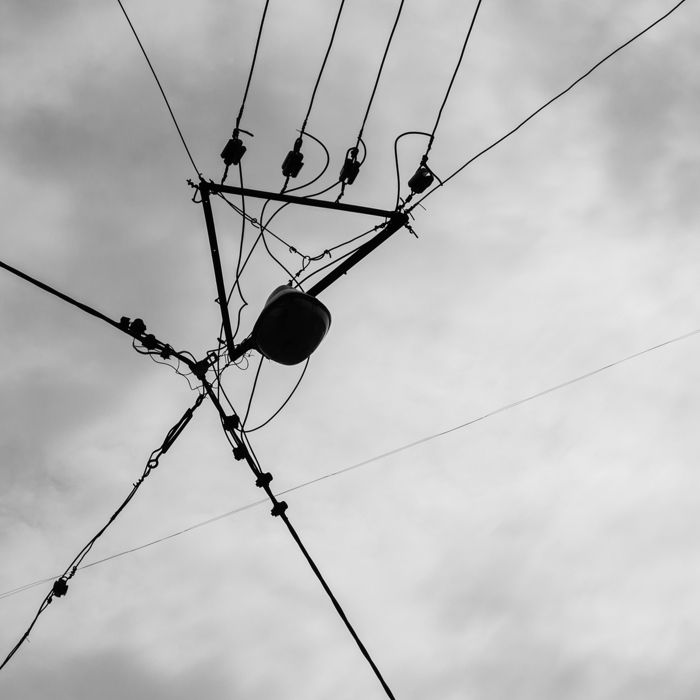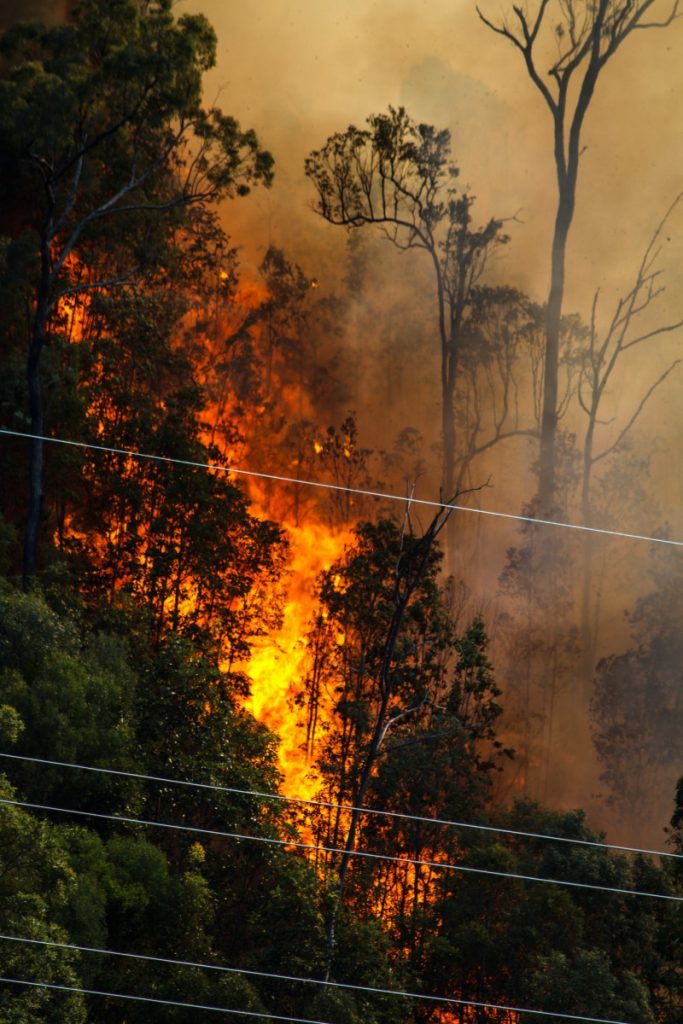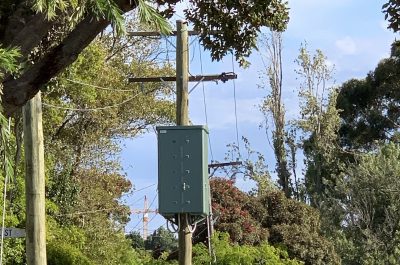An electric partnership for greater customer benefit
The recent Energy Networks Australia ‘Great Expectations: The Interactive Grid’ seminar highlighted that if we do not adapt and change the electricity system, it will not be able to continue to affordably provide what customers want or need from it. We must rethink the design fundamentals and deliver the simplest possible solution that optimises the use of existing network capability.
Energy Networks Australia and the Australian Power Institute have joined forces to form the Australian Strategic Technology Program (ASTP), harnessing university expertise and research to help solve the network challenges presented by a rapidly transforming electricity system.
The ASTP provides a coordinated approach to industry research, development and innovation, with practical outcomes intended to steer improvements in asset management and network performance for electricity utilities and explore non-network solutions.
The four network-identified priority projects underway by the ASTP are:
- Management of voltages in low voltage networks
- Conductor condition monitoring
- Quantifying extreme bushfire consequences
- Network sensing
1. Management of voltages in low voltage networks
This project will compare network and non-network approaches to managing excessive voltage variation on local low voltage (LV) networks caused by swings between embedded generation and demand. It is a collaboration between the University of Wollongong and network businesses Energy Queensland, Jemena, SA Power Networks and United Energy.
Why is it needed?
Increasing penetration of rooftop solar (photovoltaic or PV) generation is increasing the dynamic range of energy flows in the low voltage network. In some areas of high PV penetration, swings from electricity import to export are exceeding the limits of existing voltage regulation standards, as well as causing high levels of localised network volatility and reverse power flows. There is similar risk as battery uptake grows without corresponding visibility by networks about their location or activity. A coordinated dispatch of batteries in response to a market signal could cause extreme swings in demand on the local network. The resulting voltage volatility could cause localised outages and damage customer appliances. Solar inverters disconnect automatically when voltage goes outside set-point limits, which can reduce the lifespan of customer-connected equipment.
As investigated in Energy Networks Australia’s and Australian Energy Market Operator’s (AEMO) joint Open Energy Networks project, under a fast rooftop solar uptake scenario, 23 per cent of zone substations will reach threshold penetration by 2025, which is almost a quarter of all zone substations.

Figure 1: Updated projected decade in which the zone substations within each Australian postcode within the NEM and WEM will reach a threshold penetration of rooftop solar adoption (40 per cent) indicative of reverse demand/power under the ESOO Fast DER uptake scenario (From Open Energy Networks 2019)
To accommodate the forecast uptake of solar PV and battery storage, networks must consider both network and non-network approaches to finding the most cost effective and efficient solution to manage voltage issues.
2. Conductor condition monitoring
The purpose of this study is to develop cost-effective and reliable methods for assessing the likelihood of conductor failures. These failures can threaten public safety from potential electric shock or electrocution and fire initiation. The project is a collaboration between the University of Queensland, Energy Queensland, AusGrid, Western Power, Citipower, Powercor, United Energy and SA Power Networks.

Silhouette of electrician aerial conductor; Black and White
Why is it needed?
Networks have almost 800,000 circuit kilometres of overhead conductors in service, valued at several billion dollars. Conductors comprise different metal types, sizes and capacities and are employed in all climatic zones including tropical, temperate, arid, Mediterranean and polar. These critical assets are ageing with some already reaching 70 years. Despite technology advancements, reliable and cost effective methods to assess the likelihood of a conductor failure have not yet been developed.
Current conductor condition monitoring practices are mainly visual inspections, with replacement usually driven by the frequency of failures. As the risks of conductor failures threaten public safety, there is a tendency to consider early asset replacement in lieu of objective, condition-based replacement as suitable risk mitigation. This obviously increases infrastructure costs, which are ultimately passed on to customers.
Being able to more accurately assess conductor condition and predict the probability of failure will deliver safety benefits as well as cost efficiencies that will mean customers aren’t paying for unnecessary infrastructure.
3. Quantifying extreme bushfire consequences
There is no accepted approach in Australia to quantifying the consequences and benefits of undertaking bushfire mitigation investment. Whilst it is relatively easy to assess the costs associated with an individual fire-start event, these costs are typically inconsequential compared with a catastrophic bushfire event. The challenge is made harder given that while a catastrophic bushfire event is rare, its impact is enormous on distribution networks and customers. This project will identify a standardised method for accurately assessing the potential costs of a bushfire by combining fire simulations with economic and decision analyses.
The research team includes the Bushfire and Natural Hazards Cooperative Research Centre, University of Western Australia and University of Melbourne and the network partners are Essential Energy, Powercor, AusGrid, United Energy, Western Power, SA Power Networks, Powerlink and TasNetworks.

The project will model fire scenarios to estimate tangible losses after a bushfire and measure those impacts against the economics of intangible loss. Four case study regions have been selected to conduct the simulations within New South Wales, Victoria, South Australia and Tasmania.
This project is designed to help ensure maximum safety is delivered in the most cost-effective manner for customers. The Bushfire and Natural Hazards Cooperative Research Centre will also launch a report which will be a statement on national research priorities for natural hazards emergency management and resilience in Australian electricity networks.
4. Network sensing
This project involves distribution networks and researchers combining perspectives to understand the advanced functions likely to be needed to accommodate the rapid growth in flexible electricity demand and distributed energy resources (DER) like solar and storage. The project is a collaboration between the University of Queensland and network partners including AusGrid, AusNet, ElectraNet, Western Power and Energy Queensland.
It is complementary to Energy Networks Australia’s Open Energy Networks project, looking at how best to integrate solar and storage with the grid to maximise customer benefits and system reliability and security.
Why is it needed?
Increasing the efficiency of the distribution system and accommodating a flexible demand and distributed generation base requires new and refined functions for distribution networks. Each distribution area has different information and data requirements to ensure efficient integration of DER into the grid, including the nature of the data and its accuracy. Getting this network optimisation right is fundamental to the future efficiency of the network and its effectiveness in satisfying customers’ and regulators’ requirements to accommodate DER.
Project reporting
Detailed milestone reports on all four projects can be found here. To promote knowledge sharing, all ASTP projects are also available in Energy Networks Australia’s database known as Knowledge Bank.
Energy Networks Australia has released a report ‘Innovation in the Electricity Network Sector’, which outlines the case studies undertaken by networks to address technical challenges and gaps to ensure grid transformation and optimisation are achieved.
ASTP’s equation of innovation
The ASTP is an example of innovation working well, with the right mix of industry and researchers working hand-in-hand. All four projects will solve their respective network challenges with appropriate industry experience and university expertise.
The next set of themes identified by networks as challenges needing to be solved are:
- electric vehicle charging and grid scale storage
- DER, micro grids and edge of grid management
- asset life analysis, costing, internet of things, artificial intelligence & Industry 4.0.
Stay tuned for updates!
Further information
- Innovation in the Electricity Network Sector – report March 2019
- Australian Strategic Technology Program – more information
- Energy Networks Australia’s Knowledge Bank database
- Open Energy Networks project
[1] Australian Strategic Technology Program – https://www.energynetworks.com.au/australian-strategic-technology-program/
[2] Australian Power Institute and Energy Networks Australia Innovation Initiative – https://api.edu.au/_pdf/API%20ENA%20Innovation%20Newsletter%20June%202017.pdf

